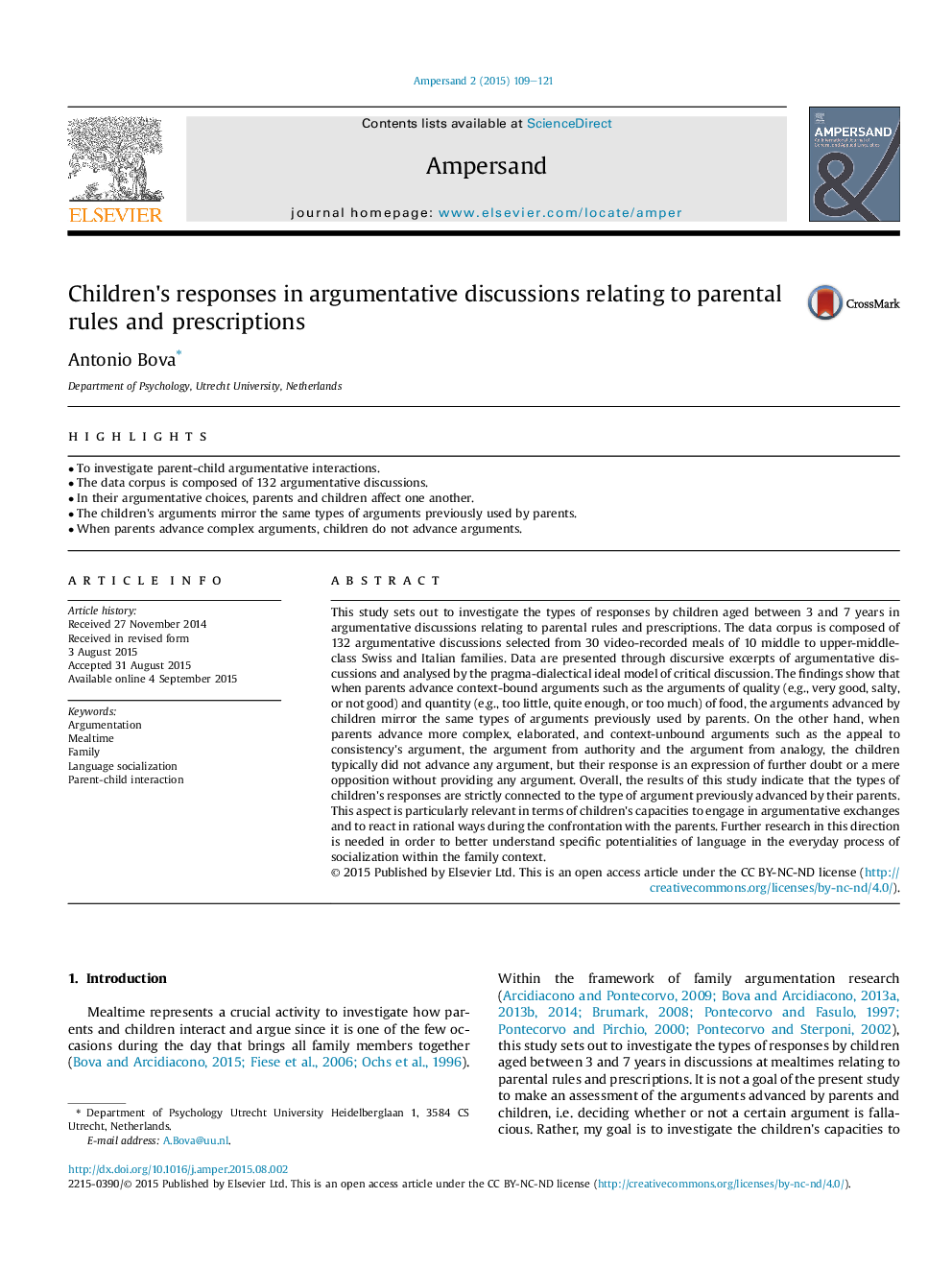| کد مقاله | کد نشریه | سال انتشار | مقاله انگلیسی | نسخه تمام متن |
|---|---|---|---|---|
| 1100485 | 1488056 | 2015 | 13 صفحه PDF | دانلود رایگان |
• To investigate parent-child argumentative interactions.
• The data corpus is composed of 132 argumentative discussions.
• In their argumentative choices, parents and children affect one another.
• The children's arguments mirror the same types of arguments previously used by parents.
• When parents advance complex arguments, children do not advance arguments.
This study sets out to investigate the types of responses by children aged between 3 and 7 years in argumentative discussions relating to parental rules and prescriptions. The data corpus is composed of 132 argumentative discussions selected from 30 video-recorded meals of 10 middle to upper-middle-class Swiss and Italian families. Data are presented through discursive excerpts of argumentative discussions and analysed by the pragma-dialectical ideal model of critical discussion. The findings show that when parents advance context-bound arguments such as the arguments of quality (e.g., very good, salty, or not good) and quantity (e.g., too little, quite enough, or too much) of food, the arguments advanced by children mirror the same types of arguments previously used by parents. On the other hand, when parents advance more complex, elaborated, and context-unbound arguments such as the appeal to consistency's argument, the argument from authority and the argument from analogy, the children typically did not advance any argument, but their response is an expression of further doubt or a mere opposition without providing any argument. Overall, the results of this study indicate that the types of children's responses are strictly connected to the type of argument previously advanced by their parents. This aspect is particularly relevant in terms of children's capacities to engage in argumentative exchanges and to react in rational ways during the confrontation with the parents. Further research in this direction is needed in order to better understand specific potentialities of language in the everyday process of socialization within the family context.
Journal: Ampersand - Volume 2, 2015, Pages 109–121
